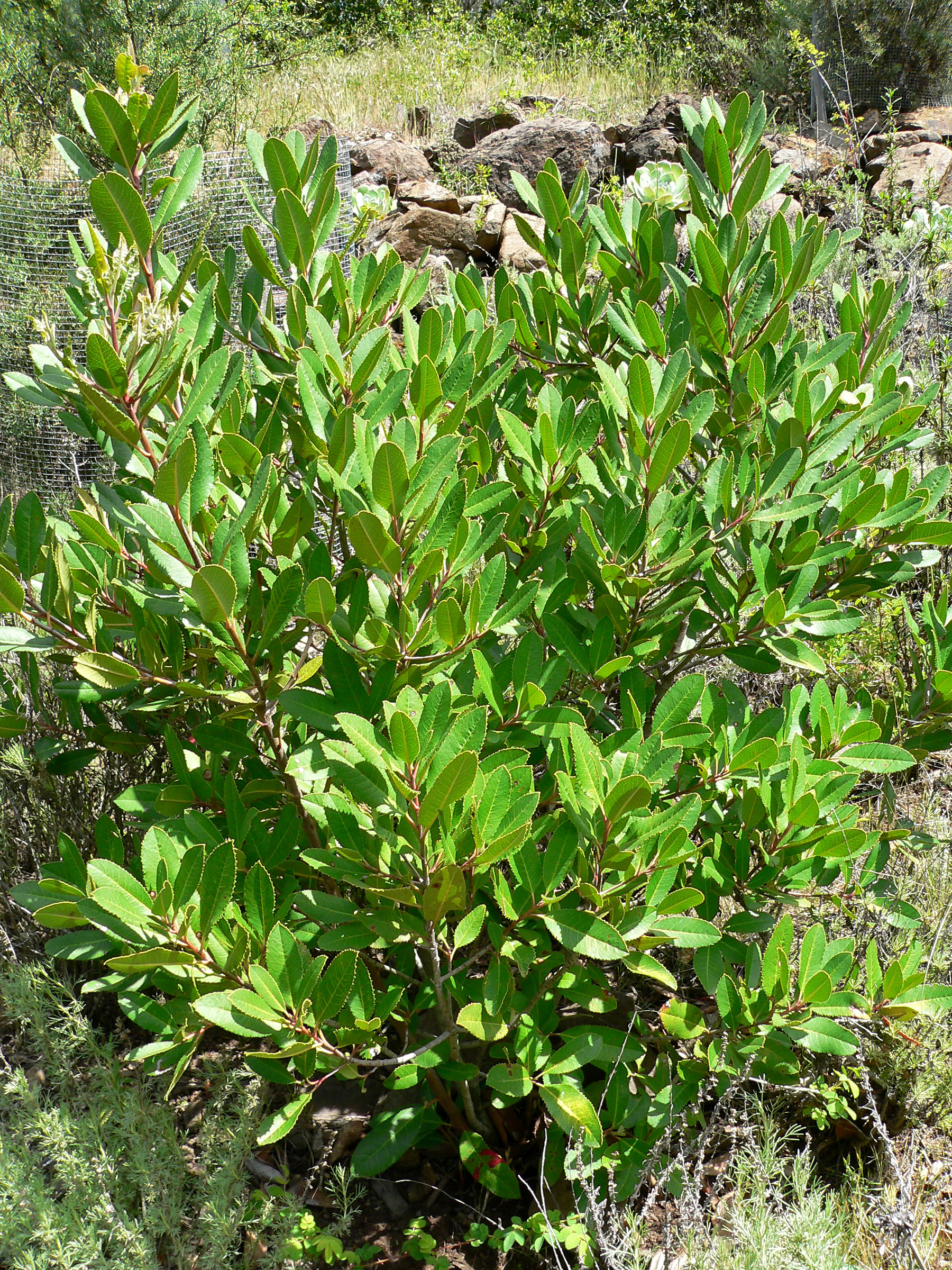- Heteromeles arbutifolia
image_width = 240px
image_caption = Habitus
regnum =Plant ae
divisio =Magnoliophyta
classis =Magnoliopsida
subclassis =Rosidae
unranked_ordo =Eurosids I
ordo =Rosales
familia =Rosaceae
subfamilia =Maloideae
genus = "Heteromeles"
genus_authority =
species = "H. arbutifolia"
binomial = "Heteromeles arbutifolia"
binomial_authority = (Lindl.) M.Roem.
synonyms ="Heteromeles salicifolia"
"Photinia arbutifolia" Lindl.Toyon ("Heteromeles arbutifolia") is a common perennial
shrub native to southwesternCalifornia ,USA and the extreme northwest ofMexico , from theSan Francisco Bay area to northernBaja California . It is the sole species of "Heteromeles", but is closely related to the Asiangenus "Photinia ", in which it is included by some botanists (it was originally described in that genus).Toyon is a prominent component of the
coastal sage scrub plant community, and is a part of drought-adaptedchaparral andoak woodland habitats. It is also known by the common names Christmas berry and California holly.Toyon typically grows from 2-5 m (rarely up 10 m in shaded conditions) and has a rounded to irregular top. Its leaves are
evergreen , alternate, sharply toothed, have short petioles, and are 5-10 cm in length and 2-4 cm wide. In the early summer it produces small whiteflower s 6-10 mm diameter, in dense terminalcorymb s. The fivepetal s are rounded. They are visited by butterflies, and have a mild, hawthorn-like scent. Thefruit is a smallpome , 5-10 mm across, bright red and berry-like, produced large quantities, maturing in the fall and persisting well into the winter. The fruit are consumed bybird s, includingmockingbird s,American Robin s,Cedar Waxwing s, as well asmammal s includingcoyote s andbear s. Theseed s are dispersed in their droppings.Uses and cultivation
The berries provided food for local Native American tribes, such as Chumash,
Tongva , andTataviam . Toyon berries are acidic and astringent, and contain a small amount of cyanogenicglycoside s, which break down intohydrocyanic acid on digestion. This is removed by mild cooking. Some berries, though mealy, astringent and acid when raw, were eaten fresh, or mashed into water to make a beverage. Most were dried and stored, then later cooked into porridge or pancakes. Later settlers added sugar to makecustard andwine . The berries also can be made into a jelly. The Native Americans also used a tea made from the leaves as a stomach remedy, the leaves and berries for dyes, and the very hard, close-grained wood for various purposes.Toyon can be grown in domestic
garden s in well drained soil, and is cultivated as anornamental plant as far north asSouthern England . It can survive temperatures as low as -12°C. The bush is handsome all year round and the bright red berries in winter are a special reward (even if the birds devour them all the first day they turn ripe). It is susceptible tofireblight . It survives on little water, making it suitable forXeriscape TM gardening, and is less of a fire hazard than some chaparral plants.Legislation involving Toyon
In the 1920s, collecting toyon branches for
Christmas became so popular inLos Angeles, California that the State ofCalifornia passed a law forbidding collecting on public land. Some believe thatHollywood, California derives its name from the numerous "California Holly" bushes which cover theHollywood Hills , but the origin of Hollywood's name cannot be confirmed.References
* [http://ucjeps.berkeley.edu/cgi-bin/get_JM_treatment.pl?Heteromeles+arbutifolia Jepson Flora Project: "Heteromeles arbutifolia"]
* [http://www.ars-grin.gov/cgi-bin/npgs/html/taxon.pl?414959 Germplasm Resources Information Network] (treats as "Heteromeles salicifolia")
* [http://www.bahiker.com/plantpages/toyon.html Photos of Toyon in flower and fruit]
Wikimedia Foundation. 2010.

